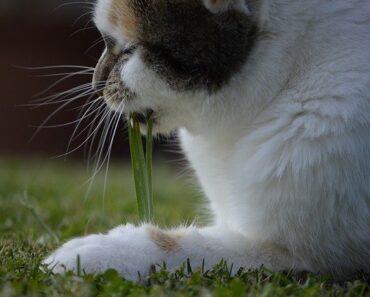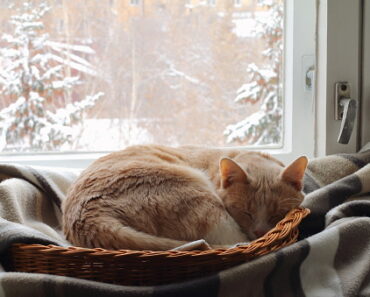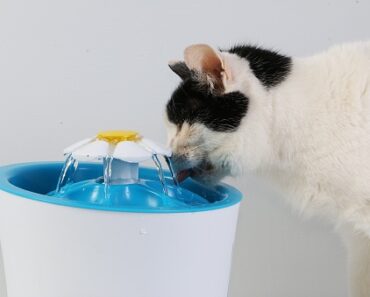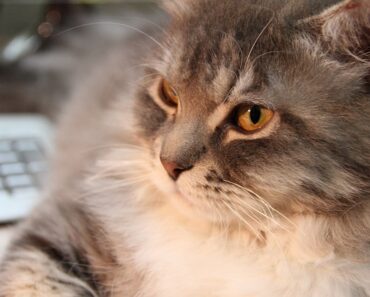
Naturally, the cat is considered a strict carnivore, which means that it can feed exclusively on meat. With domestication, the cat has switched to industrial food in the form of kibbles or swill. This food has been manufactured respecting the particular nutritional needs of the feline species.
The cat’s eating habits
In the wild, the cat is a predator that likes to hunt and make several small meals a day. Therefore, when you give its ration to a domestic cat, it is preferable to divide it into several parts to be distributed at several different times during the day (minimum 2 times). It is also preferable to always distribute the food in the same place and at the same time.
Smell is the main sense of smell that the cat uses to decide whether or not to eat. Therefore, it is important not to place food in a place with strong odors and to clean the bowl regularly.
Finally, the cat is a territorial animal that likes to define areas with specific functions within its environment. Thus, there is usually a resting place, a place for needs and a place to feed. Therefore, you should not place your cat’s litter box next to his food or water bowl because it could disturb him and make him capricious towards food. Moreover, the place to feed must be quiet and not in a place where people are passing by.
The water must be fresh and always given at will, especially for a cat fed with dry food (kibble) that stimulates thirst. Do not give milk, cats do not digest it! This does not replace the water which remains indispensable!
Kibbles or swill?
swill
- This type of food contains about 80% water, which represents an important water intake for the body, ideal for cats that do not drink much.
- The food should not be too cold. Take it out of the refrigerator about an hour before feeding it to your cat so that it is at room temperature. If your cat is being fed with swill but has a capricious appetite, you can reheat its food slightly (be careful not to overheat it) because this will release odors that are palatable to the cat.
- The swill quickly becomes dry and unappetizing for the cat. It is therefore possible that the cat will refuse to eat the food if it has remained too long in the bowl.
- Once the can of swill is opened, and even if it is kept in the refrigerator, it can be kept for a few days.
The croquettes
- Kibbles are the simplest food to manage because their texture and flavor do not degrade quickly. Thus, a bowl of croquettes can remain in the open air for a whole day or even 2 or 3 days. In addition, an opened package of croquettes will keep well at room temperature if the package is tightly sealed.
- The kibble allows your cat to eat more slowly because he has to crunch and chew. However, some cats do not chew the croquettes and swallow them directly!
- This type of food forces the cat to drink more often.
Thus, the choice of dry or wet food depends mainly on your cat’s character and appetite. You should know that it is entirely possible to give your cat a mixed diet, i.e., to alternate between dry and wet food, and that recent studies have shown that this type of diet is beneficial.
Be careful however if you change the type of food or brand, a transition is necessary: for one to two weeks, you reduce the quantity of the old food and gradually introduce the new food in the ration. This will avoid any disturbance of the flora and thus avoid digestive problems.
How much to give?
The amount of feed to be given depends very much on the brand of feed purchased, so there is no general rule. Refer to the information given directly on the food packaging for advice. Depending on the character and type of cat, it is also a good idea to change the ration. Indeed, a cat that has access to the outside and is very active will have to eat more than a cat that stays locked up all day long and doesn’t get off the couch!
However, this advice remains very general and it is sometimes a good idea to precisely adapt the quantity of food distributed. Your veterinarian will then be best able to calculate a precise ration that best suits your cat’s morphology.
Do not give your cat any extras or table scraps because this could disturb its intestinal flora and cause digestive problems, and also provide it with too high a caloric intake.
Depending on your cat’s age, morphology and state of health, the nutritional needs are different and it is a good idea to adapt the type of food you give him.
For the past few years, there has been a so-called “premium” food because it is of high quality compared to what is available in supermarkets. This premium food is elaborated by veterinarian dieticians specialized in food manufacturing companies, and is composed only of quality raw materials. This allows a better digestibility and a better health for your cat. The consequences are easily visible: the coat will be shinier, and the stools will look better and smell less if you give him this type of food.
A specific food for kittens is recommended until about one year of age (when castration is recommended). It is often given at will because the cat knows how to regulate himself but be careful to watch the weight gain, which should not be too important.
After neutering, the cat regulates its appetite less well and is generally less active due to a change in the metabolism itself, being the consequence of a change in the hormone profile. Therefore it is strongly recommended to ration the cat by giving him a defined amount of food per day (in several meals). A food dedicated to sterilized cats is recommended because it contains less fat and is therefore less energetic.
For some cats, satiety is a real problem and these cats have a tendency to become obese. A range of light food is then necessary to try to regulate weight gain. This diet is rich in fiber, a low-energy component that easily fills the stomach and reduces the feeling of hunger. This is important because obesity, as in humans, is then the source of many complications and diseases (diabetes, kidney problems …) and greatly reduces the life expectancy of your pet.
For cats with long or medium-length hair, regurgitation frequently occurs after licking the toilet and thus the ingestion of large quantities of hair that disrupts transit. A range of foods to help transit exist and are recommended for this type of cat. There are also food supplements that help eliminate ingested hair. In addition to an adapted diet, don’t forget to brush your cat regularly!
You should know that there are also specific foods to help treat certain diseases such as kidney and urinary problems (stones, cystitis), heart problems, food allergies, stress…






